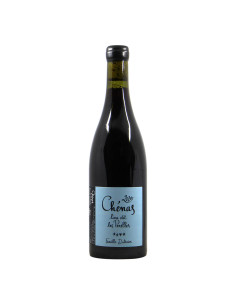FAMILLE DUTRAIVE
Jean-Louis Dutraive is known throughout the land as a true master of Gamay, one of Beaujolais’ most emblematic grape varieties. Renowned for his natural and respectful approach to viticulture, he has established himself as a benchmark producer in the region. In addition to his masterful skill in producing some of the best wines in Beaujolais, he is also a local legend with a seemingly never-ending supply of saucisson that appears at apéros any time of the day, creating an atmosphere of French conviviality.
Following vicious hailstorms in 2016 and 2017 that destroyed much of their harvest, Jean-Louis created the Famille Dutraive label with his three children: Justin, Ophélie, and Lucas. In addition to providing much-needed bottles to sell through these leaner years, the Famille Dutraive label was a way to integrate the next generation into the domaine, ensuring the continuity of their winemaking tradition and philosophy.
The Famille Dutraive wines are made from purchased grapes sourced from carefully selected parcels that follow the spirit of organic farming, whether or not they are certified. Jean-Louis and his children meticulously choose vineyards that best express the character of Gamay. The wines are vinified according to the same philosophy as those from Domaine de la Grand’Cour, prioritizing single-parcel vinification and avoiding the use of enological additives, allowing each wine to reflect the uniqueness of its terroir.
The first cuvées, created in 2016 under the name "Cap Ô Sud," were made from Cinsault and Carignan sourced from Corbières and Minervois, respectively. Today, the wines are primarily crafted from Gamay grapes grown in the Beaujolais crus of Chénas, Chiroubles, Fleurie, and Saint-Amour. Each parcel is vinified separately to preserve its distinct characteristics. Fermentation occurs naturally with indigenous yeasts, and the semi-carbonic maceration technique imparts freshness and vibrancy to the wines. Aging takes place in a combination of stainless steel tanks and wooden barrels to highlight the purity of the fruit without excessive enological intervention.





